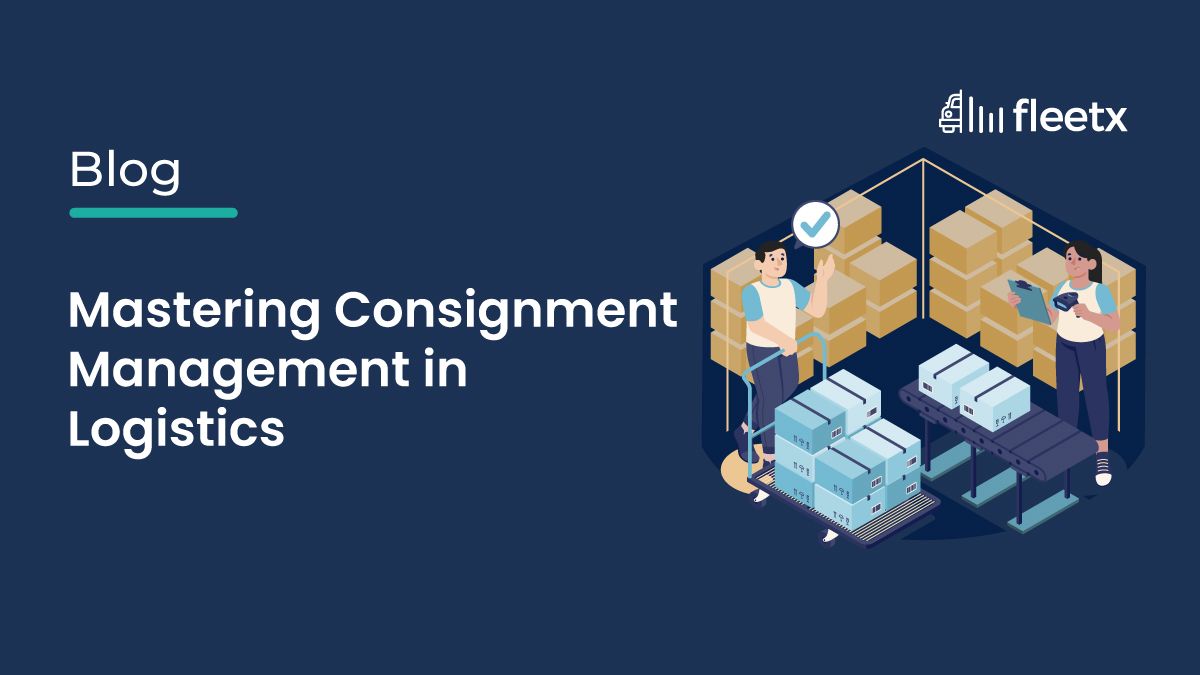
Efficient logistics and supply chain management are crucial for the smooth operation of global trade, and ports are essential as key nodes in this intricate network.
In India, ports play a crucial role in facilitating the import and export of goods through sea transportation, highlighting the significance of efficient port logistics for the nation's trade and economy.
Truck turnaround time (TAT) plays a crucial role in determining port efficiency. This metric calculates the overall duration that a truck remains within the port, encompassing the processes of cargo loading, unloading, and departure from the port area. Efficient truck turnaround time is essential for optimizing port logistics, ensuring cost-effectiveness and maintaining a competitive edge.
This blog will dig into the different aspects of truck turnaround time and its significant impact on port logistics, specifically in the Indian context.
Gaining Insight into Truck Turnaround Time
The truck turnaround time involves multiple stages, which include gate-in, waiting for a loading or unloading slot, the actual loading or unloading process, and gate-out. Various factors can impact each stage, including port infrastructure, cargo handling efficiency, customs clearance processes, and technological adoption.
The Effect on Port Efficiency in India
1. Operational Efficiency: Streamlining the loading and unloading processes is crucial for reducing TAT. Efficient systems, highly trained workers, and state-of-the-art equipment can streamline these processes, minimizing the time trucks need to stay at the port.
2. Efficient Gate Operations: By implementing streamlined gate operations, such as digital gate passes and automated vehicle identification systems, waiting times at entry and exit points can be significantly reduced.
3. Efficient Use of Resources: A shorter turnaround time enables more effective utilization of port equipment and labor. By utilizing cranes, forklifts, and other handling equipment more efficiently, their productivity can be significantly enhanced.
4. Space Management: Effective TAT contributes to improved yard management. Efficient truck movements create more room for incoming trucks, minimizing traffic and the need for extra storage space.
5. Cost Efficiency: Ports can decrease operational expenses by minimizing the amount of time trucks spend idle. These expenses encompass fuel costs, labor costs, and equipment maintenance expenses.
6. Shipping Costs: Enhancing TAT can result in decreased shipping expenses as more efficient port operations lead to faster vessel turnaround, resulting in reduced demurrage charges and detention fees.
Effects on Supply Chain and Logistics
1. Supply Chain Reliability: - Efficient processes guarantee that goods are loaded and dispatched promptly, resulting in deliveries that are always on time. Reliability is of utmost importance for businesses that depend on just-in-time inventory systems.
2.Efficiently managing inventory: Streamlined port operations enable more effective inventory management, resulting in decreased reliance on excessive buffer stocks and reduced expenses associated with holding inventory.
3. Customer Satisfaction: - Improving turnaround times enhances the overall quality of service provided to shippers and consignees. Consistently delivering orders on time and with reliability enhances customer satisfaction and fosters stronger business connections.
4.Enhancing Competitiveness: Ports that have a lower Turnaround Time (TAT) provide a significant edge to shipping lines and logistics providers, making them more appealing and facilitating their expansion.
5. Economic Impact: - Streamlined port logistics enable more efficient trade flows, which in turn support economic growth. Ports play a crucial role in facilitating international trade, and their effectiveness has a direct impact on a nation's ability to compete in the global market.
6. Creating Employment Opportunities: Enhanced port operations and higher trade volumes have the potential to generate employment opportunities in the logistics and transportation sectors, thereby stimulating local economies.
Challenges Impacting Truck Turnaround Time in India
1. Infrastructure Limitations: - Having a limited port capacity can result in congestion and longer Turnaround Time (TAT). Investing in expanding port infrastructure, which includes adding more berths and storage areas, is crucial to meet the demands of increasing trade volumes.
2. Road Connectivity: Having a well-established road network to and from the port is of utmost importance. Inadequate road infrastructure can result in traffic congestion and delays, which can have a negative impact on overall TAT.
3. Technological Adoption: - Embracing digital technologies like electronic data interchange (EDI), port community systems, and automated cargo handling systems can enhance efficiency and decrease turnaround time (TAT).
4.Efficient Tracking: Incorporating cutting-edge tracking systems for trucks and cargo can significantly improve visibility and coordination, resulting in reduced waiting times and enhanced overall efficiency.
5. Regulatory and Procedural Bottlenecks: - Extensive customs clearance procedures can have a notable effect on turnaround time. Efficient customs procedures, combined with pre-clearance and risk management systems, can speed up the movement of cargo.
6.Documentation: Streamlined documentation processes, including electronic documentation and single-window systems, can minimize administrative delays and enhance turnaround time.
7. Labor and Workforce Issues: - The proficiency of port workers has a direct impact on the effectiveness of loading and unloading operations. Investing in training programs and developing our human resources is crucial for enhancing TAT.
8.Labor Disputes: Labor disputes and strikes have the potential to significantly impact port operations, resulting in extended turnaround times. Efficient labor relations and effective dispute resolution mechanisms are essential for ensuring uninterrupted operations.
Strategies to Enhance Truck Turnaround Time in India
1. Infrastructure Development: - Investing in port expansion projects, such as adding more berths, storage facilities, and modern handling equipment, can effectively enhance capacity and alleviate congestion. As an illustration, the Jawaharlal Nehru Port Trust (JNPT), which is the largest container port in India, has been making significant investments in upgrading its infrastructure to efficiently manage the growing cargo volumes.
Enhancements to the Road Network: Improving road infrastructure leading to the port, such as dedicated truck lanes and enhanced traffic management systems, can help streamline truck movements. The Sagarmala initiative is focused on enhancing port connectivity by improving road and rail infrastructure.
2. Technological Integration: - Utilizing automated systems for gate operations, cargo handling, and documentation can greatly improve processing times and increase efficiency. Utilizing RFID and OCR technology at Indian ports has demonstrated potential in decreasing TAT.
Developing and integrating digital platforms for real-time tracking, scheduling, and communication can greatly enhance coordination and minimize waiting times. The Port Community System (PCS) 1x is a remarkable initiative that brings together various stakeholders to facilitate smooth data exchange.
3. Process Optimization: - By implementing lean management principles, port operations can identify and eliminate inefficiencies, resulting in reduced TAT and improved productivity.
4.Collaboration: Promoting collaboration among port authorities, shipping lines, customs authorities, and logistics providers can optimize processes and improve coordination.
5. Regulatory Reforms: - Upgrading customs procedures, such as introducing pre-clearance systems and risk-based inspections, can speed up cargo clearance and decrease turnaround time. The Indian Customs Electronic Gateway (ICEGATE) has played a crucial role in streamlining customs clearance processes, resulting in significant reductions in clearance times.
6.Policy Support: Government policies that promote port development, encourage technological adoption, and facilitate infrastructure improvements can foster an environment conducive to efficient port logistics. The National Logistics Policy aims to address various logistics bottlenecks, including TAT at ports.
In summary
Efficient truck turnaround time is crucial for optimizing port logistics. Improving turnaround time can result in notable enhancements in operational efficiency, cost-effectiveness, supply chain reliability, and customer satisfaction. Efficiently optimizing TAT in Indian ports requires addressing infrastructure limitations, technological adoption, regulatory bottlenecks, and workforce issues. With the continuous growth of global trade, Indian ports that focus on optimizing truck turnaround times will have a competitive edge in meeting future demands and fueling economic growth.






